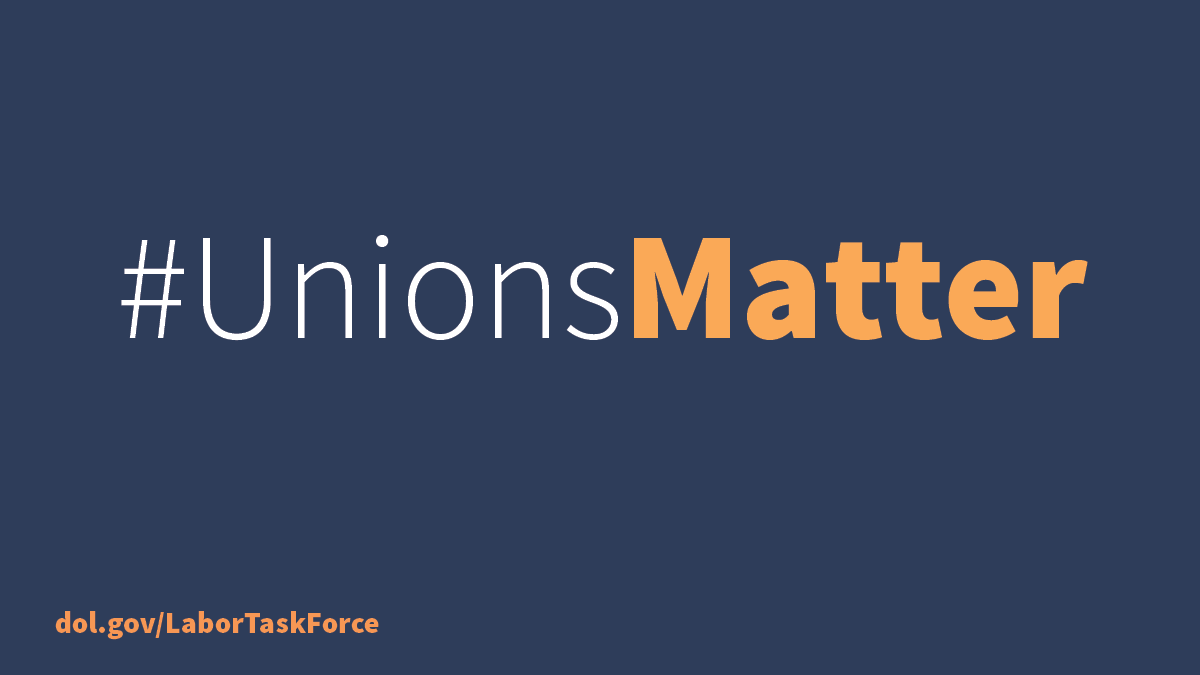
Across a wide range of industries, a growing number of businesses are recognizing that their workers want unions and are opting out of fighting workers in union election campaigns. The Department supports efforts to empower workers because of the importance of knowledgeable, empowered workers to the Department’s mission. So we sat down with Aurelia Glass, a researcher at the Center for American Progress to discuss her latest research on the topic and to learn more about this trend—and what it means for workers and employers. Here’s what she shared:
Q: What does this trend of increasing voluntary recognition mean for workers and businesses?
A: Workers today want to join unions — in fact, nearly half of non-union workers stated that they would join a union if they could, and as pro-union Gen Zers enter the workplace this support will likely remain strong. The trend of voluntary recognition means that workers not only benefit from a simpler and fairer process for forming a union, but also that businesses can avoid fighting costly anti-union campaigns against workers. Workers that can organize a union stand to gain substantially from increased wages, better benefits, and more voice on the job, while businesses have the opportunity to start their relationship with the union on the right foot and reap the productivity, safety, and training benefits of working more closely with workers.
Q: What is voluntary recognition, and why are we seeing more of it? How does voluntary recognition affect the organizing process?
A: When workers organize a union, they must prove to their employer that the union has the support of a majority of workers in the workplace as a bargaining representative. Most often employers force an NLRB-supervised election to show majority support, but voluntary recognition instead allows an employer to recognize the union once a majority of workers have signed cards authorizing the union to represent them.
This is important because the election process is often the most contested part of forming a union. Employers all too often wage scorched-earth campaigns against workers, engaging in legal activity like holding mandatory meetings for workers designed to convince them to change their vote as well as illegal activity like firing organizers — in fact, from 2018 to 2022, U.S. employers were charged with breaking the law in nearly 40 percent of union election campaigns. This sets a high bar for workers to clear, making it far harder for workers to exercise their right to collective bargaining.
As a result, voluntary recognition both levels the playing field for workers and gives businesses the chance to recognize workers' interest in joining a union. While it doesn't guarantee a first contract, it does allow businesses and workers to start the process more quickly and smoothly.
Q: What are some of the advantages for workers and businesses in reaching voluntary recognition agreements?
A: Voluntary recognition skips the most contentious and drawn out part of an organizing campaign — the election process. This means workers have their union recognized with less of a fight, and the parties can move forward on a more positive basis. Research has shown that voluntary recognition leads to a smoother road to a first contract (although it does not guarantee a first contract). Unions boost worker productivity by reducing turnover and promoting safer workplaces, and they often partner with employers to create training opportunities. With a voluntary recognition agreement, workers no longer need to contend with strong anti-union campaigns prior to an election and the disruption that brings, and can focus instead on the task of bringing their colleagues together for collective bargaining. However, this is only a first step — unions still need to reach a first contract, which employers can sometimes drag out.
Q: Can we expect this trend to continue?
A: Unions today are reaching heights of popular support not seen in decades, meaning the current trend of voluntary recognition may continue as more workers organize at their workplaces and more businesses see the benefits of starting labor relations off on more positive footing. Furthermore, some businesses are creating a framework to follow when employees in its subsidiaries and related groups seek to unionize. For example, Microsoft implemented a framework for remaining neutral at Microsoft subsidiaries, and the company has subsequently recognized unions that represent workers at unique workplaces within the company. Similarly, Major League Baseball recognized the decision of minor league players to be represented by the Major League Baseball Players Association, which has represented other baseball players working for MLB for decades. This is a positive development and indicates companies are thinking in new ways about unionization.
Want to learn more about unions and collective bargaining and their impact on the nation’s economy and workers? Visit the U.S. Department of Labor’s Worker Organizing Resource and Knowledge Center.
Cassie Robertson is Acting Deputy Assistant Secretary for Research and Evaluation in the Office of the Assistant Secretary for Policy
Aurelia Glass is a Research Associate at the Center for American Progress

 U.S. Department of Labor Blog
U.S. Department of Labor Blog